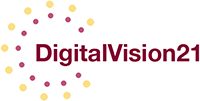“It is not the regulators’ job to prevent a bank from failing.” A former Deputy Controller at the OCC notes that banking is a business, and the responsibility for a company’s success or failure rests with the bankers and the board of directors that manage it. Propping up banks to avoid failures would only encourage future risk-taking by socializing risks while privatizing profits. That said, poorly conceived policies or lax regulatory oversight can lead to problems. There will have to be a post-mortem on the recent bank failures, but the assessment of blame and decisions on changes to existing regulations should occur at a time when cooler heads will prevail. “Never make important decisions while you’re angry”, as the author’s mother taught him.
Phased retirement options are gaining ground as senior executives retire. These can be a way to retain needed expertise and transfer knowledge to the next generation. With baby boomer retirements increasing and creating a shortage of qualified employees, some companies have implemented phased-out work programs for retiring executives. A 2022 survey found that 23% of companies now offer some form of phased retirement options, up from 19% in 2018. This approach allows senior employees to gradually reduce their workloads, transfer their knowledge to junior employees, and maintain their connection to the workforce. Mentorships and reduced workloads can help retain key employees and train successors, benefiting both the organization and retiring executives
Financial services firms are increasingly integrating generative AI and CRM technologies to create hyper-personalized content, improving customer experiences and operational efficiencies. Key applications include personalized content, chatbots, personal assistants, and improved customer insights. Generative AI allows for cost-effective customization at scale, personalized content production, and optimized user engagement. AI-powered chatbots enhance customer service and onboarding experiences. Moreover, generative AI can analyze large amounts of customer data to inform marketing strategies and automate routine tasks, leading to increased efficiency and cost savings. However, potential legal, ethical, and security risks must be carefully managed through appropriate design, testing, and rules-based guardrails.
Gen X is often overlooked by media and financial services providers, yet they are a crucial demographic with significant financial responsibilities and buying power. As the “sandwich generation”, they face financial stress from caregiving duties for both Baby Boomer parents and Millennial children. Many look to their employers when seeking financial advice, with 72% wanting employer-offered programs to manage finances. Gen Xers are comfortable with technology and are adopting payment apps and buy now, pay later options. They are cautious investors, focused on retirement, and seek advice on savings, insurance, and retirement accounts. Investments in robust digital capabilities and user experiences can engage this generation and address their evolving needs.
Payments modernization is rapidly changing the fintech landscape, driven by advanced technology, robust payment standards, and the pandemic. Businesses now expect financial institutions to offer innovative solutions such as real-time payments and payment requests. In 2023, small and mid-sized businesses will seek broader digital financial management tools and integrated payment solutions to overcome challenges in accounts payable and receivable processes. By offering embedded banking platforms with integrated services like accounting, invoicing, and cash flow forecasting, financial institutions can help these companies tackle cash flow issues. Cloud-native solutions and API-enabled platforms are transforming the industry, while digital identity, payments infrastructure, and digital currencies reach a tipping point. Financial institutions are expected to develop personalized products and services to better serve their customers in this rapidly evolving landscape.
Simultaneously pursuing multiple, potentially interdependent projects can increase complexity, cost, and risk. Organizations may be better served by focusing on smaller, discrete transformation projects while quickly demonstrating continuous progress. This iterative approach drives behavioral change, delivers intrinsic human and organizational benefits, and validates assumptions faster. It enables organizations to manage risks better and improve delivery velocity. And a sequential, iterative, and incremental approach to change allows organizations to course-correct quickly to achieve better outcomes.
Apple released its new ‘Apple Pay Later’ service to select users this week. This “buy now, pay later” service will allow customers to pay for purchases in four installments over six weeks. These loans can be between $50 and $1,000 and will have no interest or fees. Enrolled users will be able to apply for a loan directly in the checkout flow when making a purchase. Apple will only allow the linking of the service to debit cards, which should help minimize instances of consumers paying off one form of debt with another.
